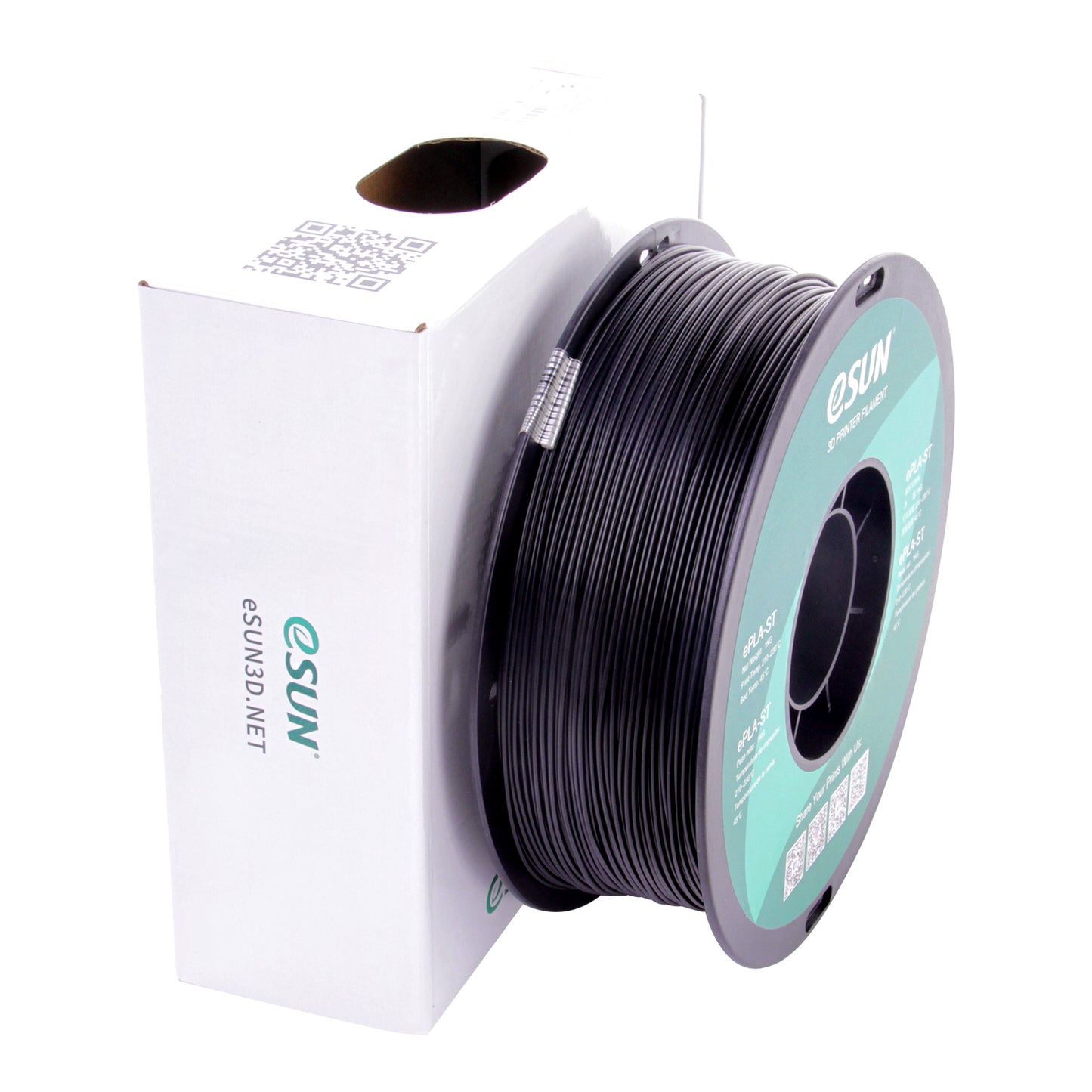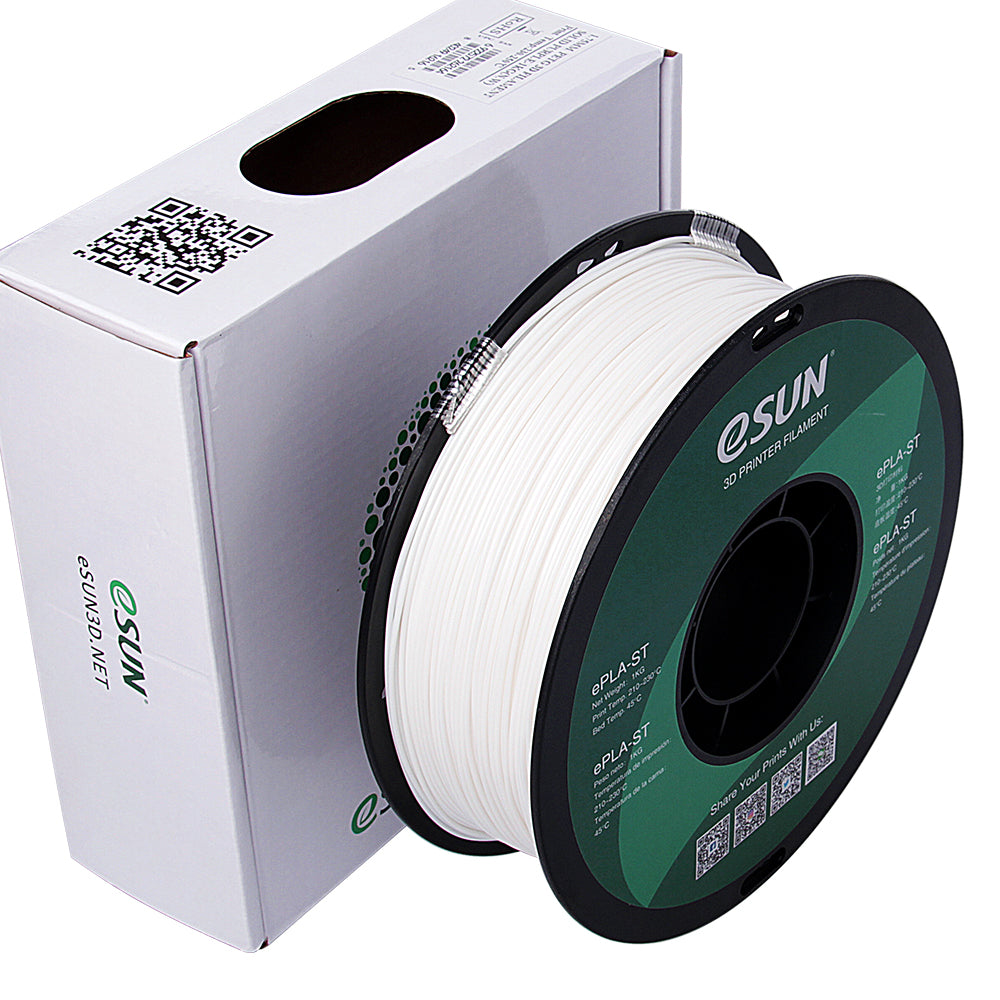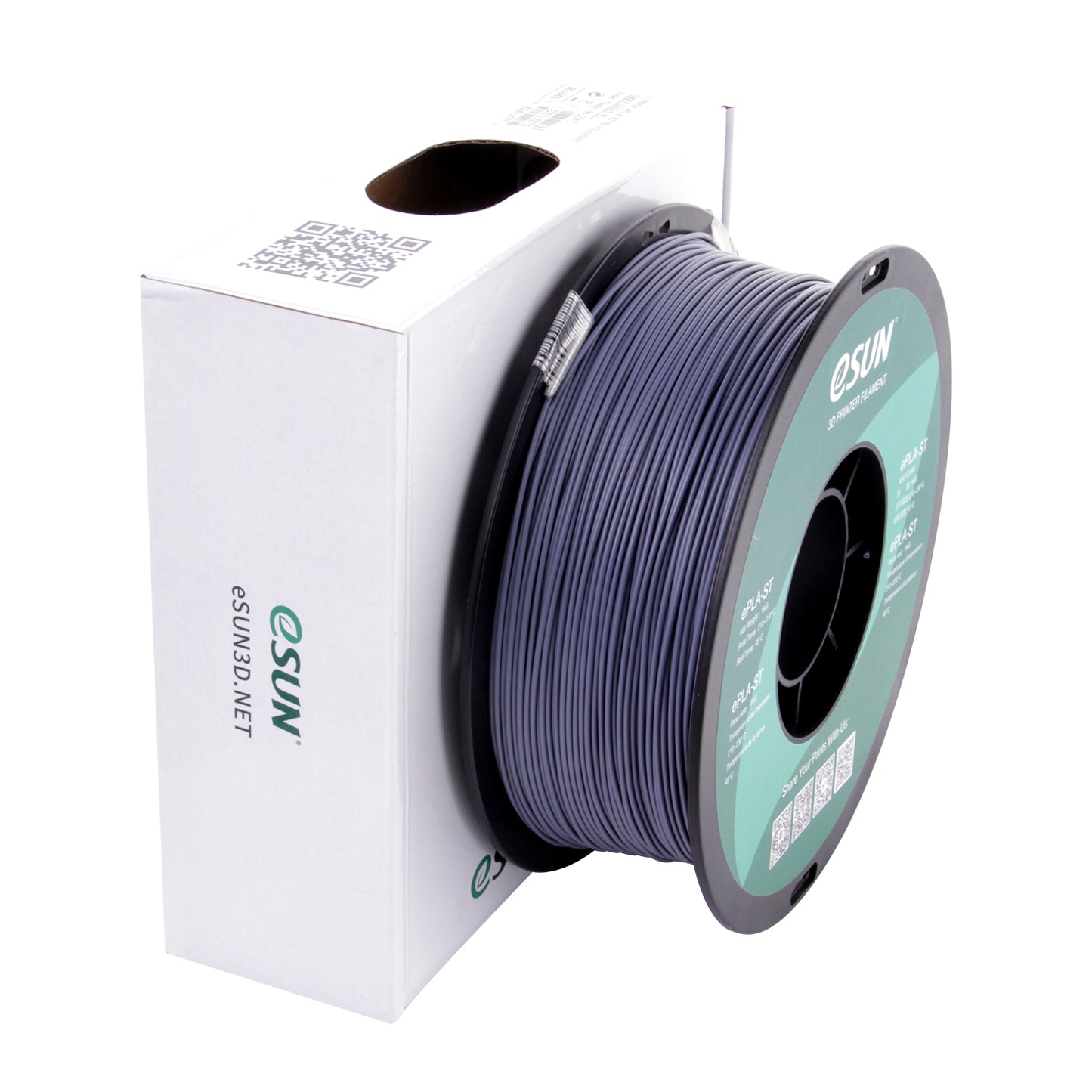eSun ePLA-ST
eSun ePLA-ST
A filament that is harder than regular PLA with high impact strength which is good for mechanical parts and for prototypes
-Excellent prints
-Better toughness than PETG
-High impact resistance
4 in stock
Couldn't load pickup availability
Share
Description
High impact resistance, high elongation at break, high bond strength and high accuracy when printing. The toughness is better than PETG and it has good printing like PLA, suitable for printing mechanical parts with requirements of toughness and precision.
Example Application areas
Printed models




Product Details



Parameter Information
| Filament Properties Table | |
| 3D PRINTING FILAMENT | ePLA-ST |
| Density (g/cm3) | 1.25 |
| Heat Distortion Temperature (℃, 0.45 MPa) | 52 |
| Melt Flow Index (g/10 min) | 3.2(190℃/2.16kg) |
| Tensile strength (MPa) | 34.3 |
| Elongation at break (%) | 90 |
| Flexural Strength (Mpa) | 43 |
| Flexural Modulus (MPa) | 1477 |
| IZOD Impact strength (kJ/㎡) | 63 |
| Abrasion resistance | 4/10 |
| Printing | 9/10 |
| Recommended print parameters | |
| Extruder temperature (℃) | 190 – 230℃ Recommended temperature 215℃ |
| Bed temperature (℃) | 45 – 60°C |
| Fan speed | 100% |
| Print speed | 40 – 100mm/s |
| Heated bed | Voluntarily |
| Recommended building surfaces | PVP glue, PEI, Printer's supplied mat |
| Functions | |
| Flexible | —— |
| Elastic | —— |
| Shock resistant | √ |
| Soft | —— |
| Composite | —— |
| UV resistant | —— |
| Water resistant | —— |
| Dissoluble | —— |
| Heat resistant | —— |
| Chemically resistant | —— |
| Fatigue resistant | —— |
| Needs drying | —— |
| Heated bed required | —— |
| Printing recommendation | —— |
Notes
Printers with Bowden Extruders are recommended a print speed of (≤40mm/s) to prevent potential feeding problems.
Storage
How to store filament:
1. If you are going to leave your printer inactive for more than a couple of days, please retract the filament to protect the printer nozzle.
2. To extend the life of your filaments, put the release filament back into the original vacuum bag and store it in a cool, dry place after printing.
3. When storing your filament, please feed the loose end through the holes on the edge of the filament roll to avoid winding, so that it will feed properly the next time you use it.




